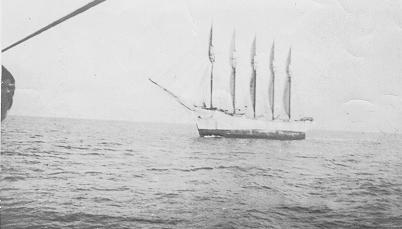
On Jan. 31, 1921, the five-masted commercial schooner Carroll A. Deering was found aground in North Carolina. The ship’s log, navigation equipment and lifeboats were missing, as were the crew’s personal effects. She had last been sighted by a lightship at Cape Lookout, whose captain had spoken with a thin man with reddish hair and a foreign accent — decidedly not the Deering‘s captain. The lightship also noted that the crew seemed to be “milling around” on the Deering‘s foredeck, where they were usually not allowed.
But that’s all anyone knows, really. The crew’s disappearance remains unexplained to this day. Was it piracy? Mutiny? A commandeering by Russian communists? Without evidence, it remains a mystery.





